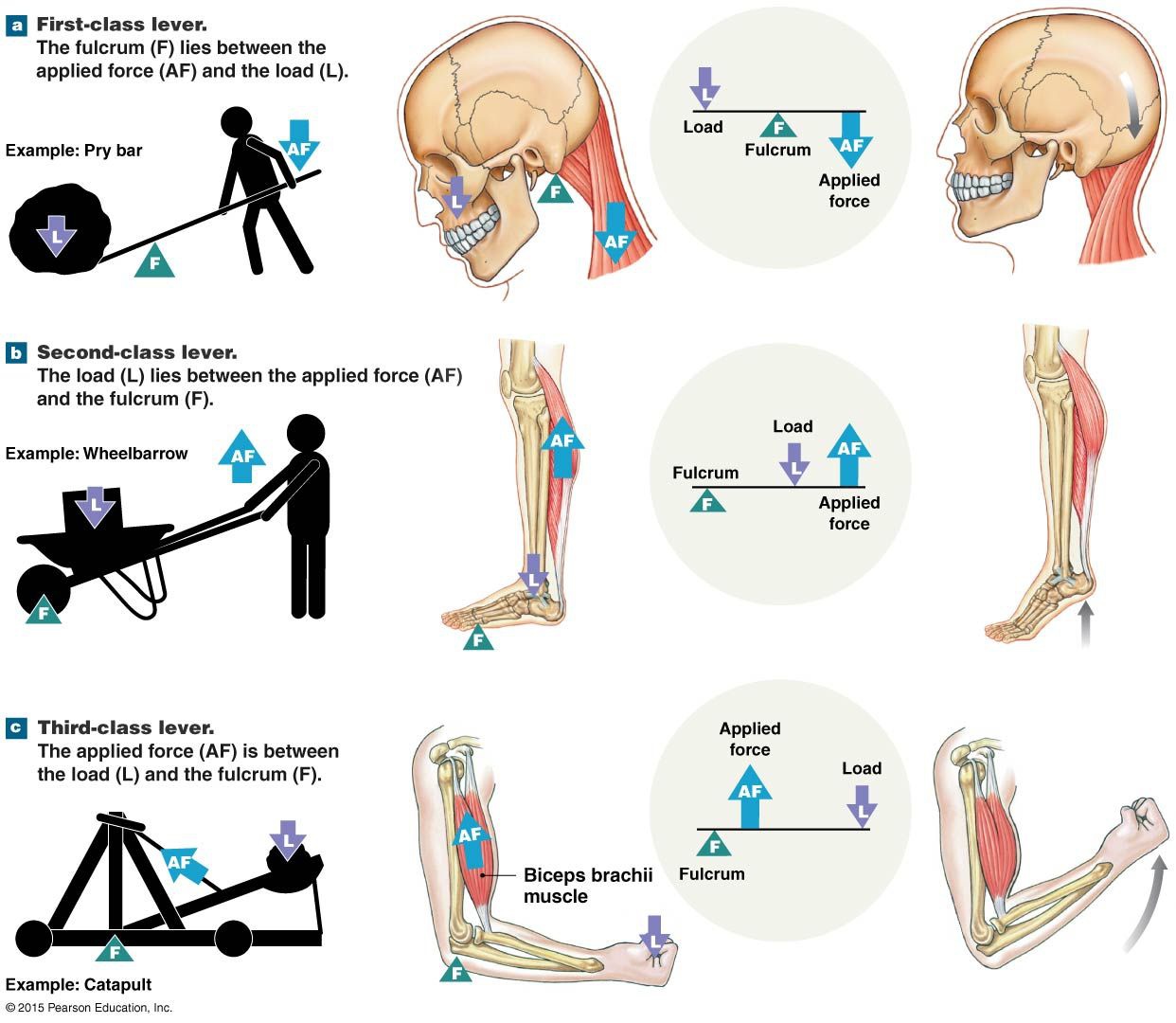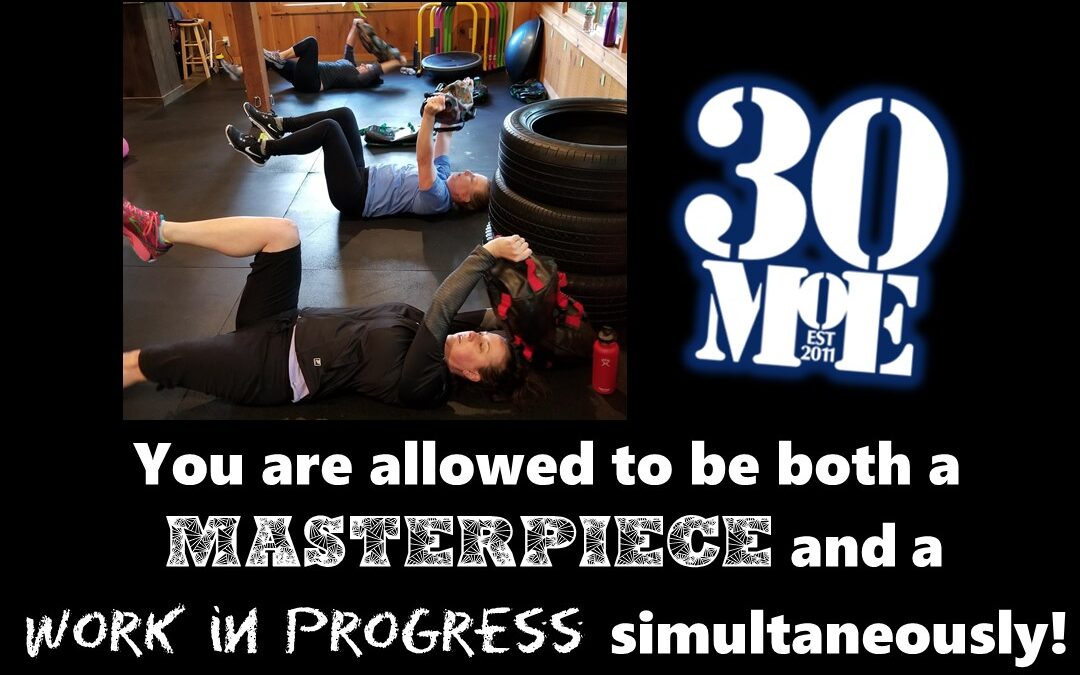Today we’re going to talk about levers. I know, I know, you’re probably tired of sciencey stuff, but this might make you look at human movement a bit differently. Our bodies are incredibly efficient and designed for optimal performance. It’s what we do to them that gunks up the systems. We have many levers in our body that make movement possible.
A lever is a rigid bar that moves around a pivot point (a fulcrum) when a force is applied. Muscles provide the effort to move the weight. Watch this quick 2-minute video below to get a quick summary of levers in the body.
There are three different types of levers in the body. The arrangement of the joint, muscle force, and load of the object makes each lever different. The graphic below clearly shows you where the load, fulcrum, and force are placed as well as real life examples.

Levers function in our body to provide optimal movement. Their two main functions are 1) to increase the resistance that our muscles can overcome and move something and 2) to increase the speed of movement. The 3rd class lever is the most common in the body. A simple example is movement about the knee joint. This 3rd class lever increases speed of movement and range of motion about the joint. Let’s compare a 2nd class and 3rd class lever; calf raise vs. bicep curl.
In a 2nd class lever, the force is further away from the fulcrum than the load. In a 3rd class lever, the force is closer to the fulcrum than the load. The longer distance between the muscle & joint compared to the load & joint means that part of your body can lift a heavier load. Example: calf raise a 50lb weight is easier than bicep curl a 50lb dumbbell. In the calf raise, the load is between the toe joint and the calf muscle attachment at the heel. In the bicep curl, the load is at the end of your arm & the bicep is closer to the elbow joint. A longer distance between the muscle & joint compared to the load & joint means it can lift more. It also means less range of motion compared to a 3rd class lever. There are advantages and disadvantages to all three classes of levers. They work collectively in our bodies to cause movement.
That’s your quick & dirty tutorial on levers in the body.

